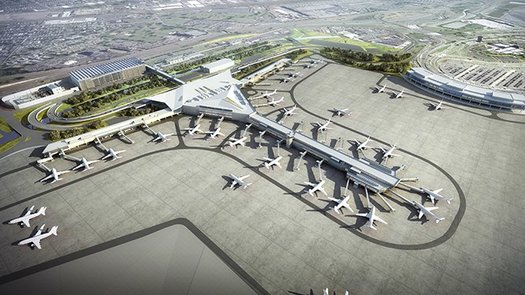PANYNJ approves US$500m of works for Newark Liberty Airport

The board for the Port Authority of New York and New Jersey (PANYNJ) has approved US$496m for major landside and airside projects as part of the US$2.3bn Terminal A redevelopment program at Newark Liberty International Airport in New Jersey.
The board’s decision marks a significant milestone for the redevelopment program, which will deliver a 33-gate, 1,000,000ft2 (93,000m2) terminal, create parking for 3,000 vehicles, and provide a more efficient roadway network to reduce congestion.
Work authorized includes paving; the demolition of buildings, concourses and satellites; installation of a new drainage system; construction of four new bridge structures, and taxi lane lighting and curbing.
The new terminal, to be referred to as Terminal One to avoid confusion with the existing Terminal A, is scheduled for a partial opening in 2021, with full completion in 2022.
Kevin O’Toole, chairman of PANYNJ, said, “Newark Liberty is experiencing unprecedented growth in passenger traffic, up about 7% this year and on pace to greatly exceed the record 40 million customers we served in 2016. As another record year for Newark Liberty and our entire airport system draws to a close, this vote reaffirms our agency’s commitment to modernizing our airports and delivering world-class customer service.”
An additional US$250m was authorized for two new projects directly tied to terminal redevelopment: US$175m to pave 40 airside acres to create needed aircraft parking positions, and US$75m for foundation work on new terminal frontage to accommodate a future AirTrain alignment. In addition, the board approved US$8m to analyze the feasibility of consolidating rental car facilities (CONRAC) to centralize operations of all rental agencies serving the airport, as well as the design and construction of a new 3,000-space public parking garage that would help serve Terminal One.
Terminal One will have the capacity to accommodate 13.6 million passengers annually while retaining the flexibility for future growth and expansion, serve larger aircraft and meet changes in passenger demand. The current facility, opened in 1973, was designed to handle a maximum of nine million passengers per year.
